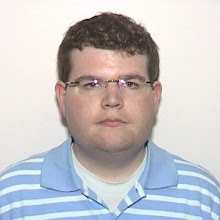Reading these three articles have been both nostalgic for me, and inspirational. I use the word nostalgic because I was probably the first person in the neighborhood to buy the first music notation software when it came out. Aspiring to be a composer like Beethoven or Schubert, I loved to compose from an early age, and I was used to composing from the piano and writing things out on manuscript paper. I was overjoyed to learn that music notation was a means for me to enter my music into a program that would play it back for me automatically and allow me to orchestrate and make important decisions that would be impossible without this technology. I think it really trained my ear to be sensitive to certain instrumental timbres, and it helped me later in life when I took ear training.
The first notation software I ever bought was called "Music Time." I enjoyed it because it was very easy to use and offered quick playback. I could brainstorm around a theme or a motif and two hours later be looking at a completed composition. I'm grateful for the MIDI technology that Floyd talks about in his article, and I'm happy that this technology continues to serve the world today. One thing that I would say as a cautionary note pertaining to music notation software is that it does not fundamentally teach the basics of proper orchestration and instrumentation. Just because I could create a "violin concerto" or even a "symphony" on my computer did not necessarily mean it could be performed. As a child, I had no idea about issues like range, string properties, instrumental tendencies, and so much more. Even though my compositions may have sounded good on the computer, it took me a long time to come to the realization that instruments have limitations. In other words, I was enjoying a digital paradise while neglecting almost everything practical. As music educators, we must also be aware of these dangers.
Rudolph's article may have the solution. He spoke about extremely practical ways to utilize notation software to be a tool to the educator. It is important to know how to re-write parts, transpose, transcribe, and create exercises that teach students how to do these tasks faster and with more accuracy. I love how Rudolph asks his middle school students to compose duets. Technology would be a great way to bring these compositions to life. The software would be useful not only for creating music, but for sharing it with fellow classmates.
Finally, Watson's article is stimulating in many ways, showcasing an endless amount of uses for music technology software. I'm not exactly sure how "innovative" they are, but it is a good standard list of 11 things you can do with notation software. I assume that most people already know a good deal about simple features like playback, scrolling, creating individual compositions, sharing PDF files, ear-training, etc... I'm not exactly sure why Watson thinks that these are "innovative," even if this article was written in 2003. I knew about these features in 1995! But I digress. Altogether, Watson does put together informative thoughts about exciting things that students and educators can do alike. It is worth the read and may even prove to be inspirational.
Thursday, September 10, 2009
Subscribe to:
Post Comments (Atom)

It's wonderful that you were interested in composition from such an early age. I'm sure you'll find exciting ways to use notation software with your own students in the future as you share your love of composition with them. If you ever get middle school students to write duets, I'd love to hear them.
ReplyDelete